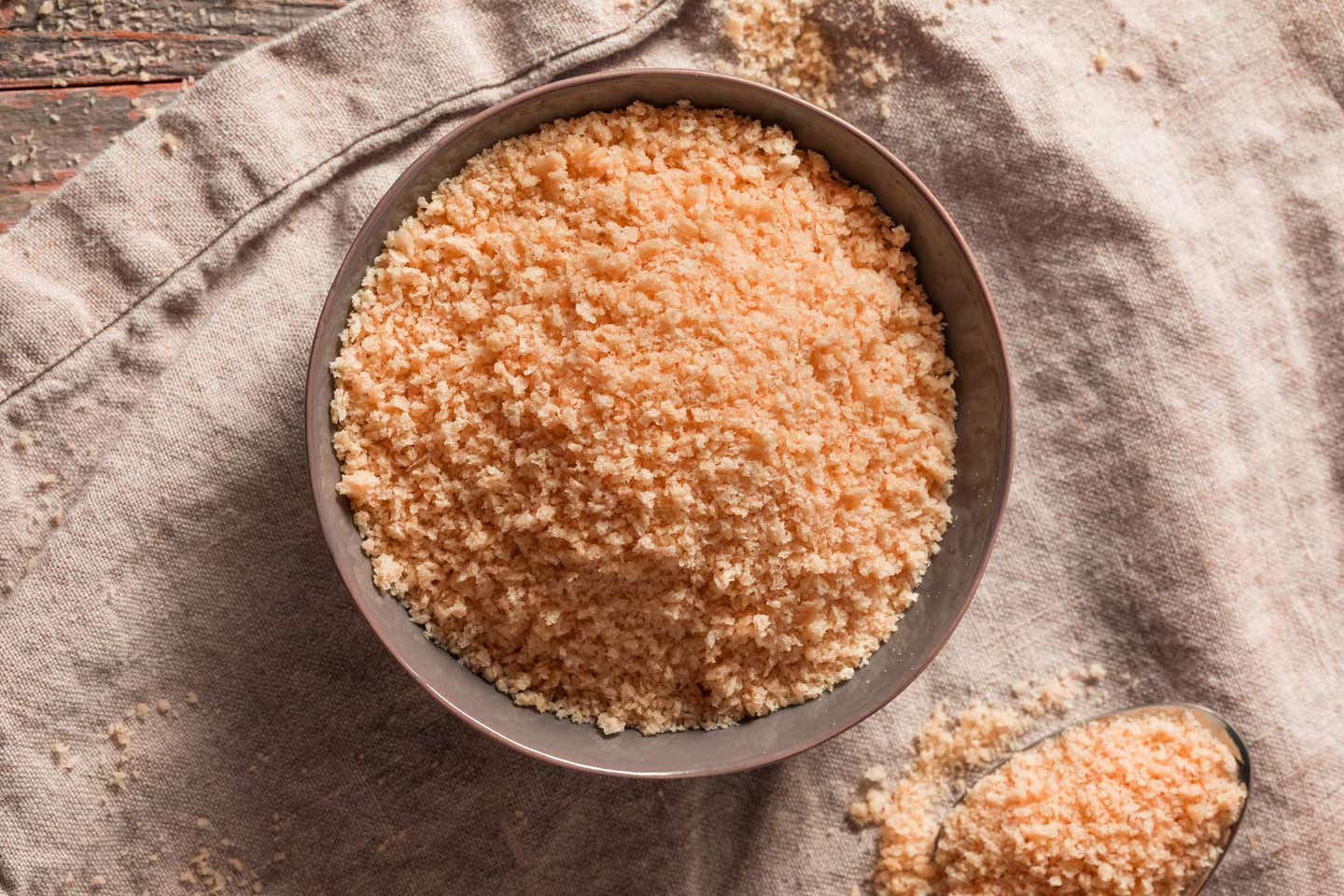
What Is Panko? How to Use the Japanese Bread Crumbs
Panko bread crumbs are fluffy, flaky, unseasoned Japanese bread crumbs traditionally used as a crispy outer coating for fried foods. Now widely available in most supermarkets, the jagged, oblong bread crumbs come in whole wheat and gluten-free versions, and they can be used interchangeably with regular bread crumbs to give foods extra crunch.
If you’re not already a fan, here’s why panko will be your new go-to ingredient for adding crispness and crunch to everything from light salads to hearty casseroles.
How Is Panko Different from Other Bread Crumbs?
Sift a handful of panko through your fingers and you’ll immediately notice some ways in which it’s different from regular bread crumbs. First, panko has both large and small oblong, shard-like flakes, while regular bread crumbs have a more uniform, meal-like shape. Then there’s the color. Panko is pale, not golden brown. Finally, the texture: Panko is much lighter and airier than regular bread crumbs. But why?
The secret to panko’s crisp, feathery consistency lies in how the bread for panko is baked. The bread loaves are cooked in special ovens that use an electric current rather than radiant heat. Because no radiant heat is involved, the loaves bake up light and airy and do not develop outer crusts. After the crustless loaves have been allowed to dry, they are ground into coarse, sliver-shaped crumbs which are crisped one last time before packaging.
Panko’s jagged flakes have a larger surface area and more air pockets than regular bread crumbs, which allows moisture to escape. Less moisture means more crunch, and bread crumb toppings and coatings that stay crisp longer.
How to Use and Store Panko
Panko can be used interchangeably with regular bread crumbs in most recipes—often with crisper, less dense results. (See below for a list of some favorite Forks Over Knives recipes that call for panko.)
For a more traditional bread crumb consistency, pulse panko bread crumbs in a food processor until it resembles coarse meal. You may need to remeasure the panko after it has been ground in the food processor because flakes of panko are more voluminous than regular bread crumbs.
For optimal freshness, store opened packages of panko in an airtight container in the freezer for up to 6 months.
Shopping for Panko
Basic panko is made with refined wheat flour bread, but there are also whole wheat options to choose from. Whole-food, plant-based eaters should check panko labels carefully to make sure the ingredients don’t include oil or shortening. Two to try: Pereg’s Whole-Wheat Premium Panko and Kikkoman Gluten-Free Panko (which is also sugar-free).
Gluten-Free Panko
While most panko contains wheat flour, there are gluten-free panko options available. Our favorite is Kikkoman Gluten-Free Panko. Some gluten-free panko varieties use eggs as a binder, so if you’re vegan or whole-food, plant-based, be sure to check labels for that.
4 Easy Ways to Use Panko
Panko isn't just breading for fried foods. Max out panko’s natural crunch factor with these quick, easy, and healthy uses.
- Sprinkle on pizza—before or after baking.
- Toss into salad—it soaks up all the flavors.
- Use as a sprinkle topping or last-minute mix-in for pan-sauteed veggies, such as Panko Broccoli with Sun-Dried Tomatoes.
- Stir into dips to enhance texture—try it in hummus!
How to Make Vegan Panko Parmesan
For a crunchy all-purpose cheese sprinkle, toast 1 cup panko bread crumbs in a nonstick skillet over medium heat 3 to 4 minutes or until lightly browned. Cool, then stir in ½ cup nutritional yeast. Store in an airtight container in the refrigerator up to 1 month. Use as a last-minute topping for pizza, salads, and stews.
Our Favorite Recipes that Use Panko
From crispy-topped casseroles and crunchy coated onion rings to light, moist fritters and veggie burgers, panko has you covered.
- Farro, Mushroom, and Leek Gratin
- Creamy Cauliflower Bake
- Mashed Rutabaga with Italian Roasted Cauliflower and Chickpeas
- Air-Fried Green Tomatoes
- Roasted Garlic, Delicata Squash, and Farro Stew
- Air-Fryer Portobello Burgers with Thousand Island Aïoli
- Chickpea and Corn Fritters with Tomato-Corn Chutney
- Delhi Chaat

About the Author

About the Author
Mary Margaret Chappell
Join our mailing list
Get free recipes and the latest info on living a happy, healthy plant-based lifestyle.
By providing your email address, you consent to receive newsletter emails from Forks Over Knives. We value your privacy and will keep your email address safe. You may unsubscribe from our emails at any time.